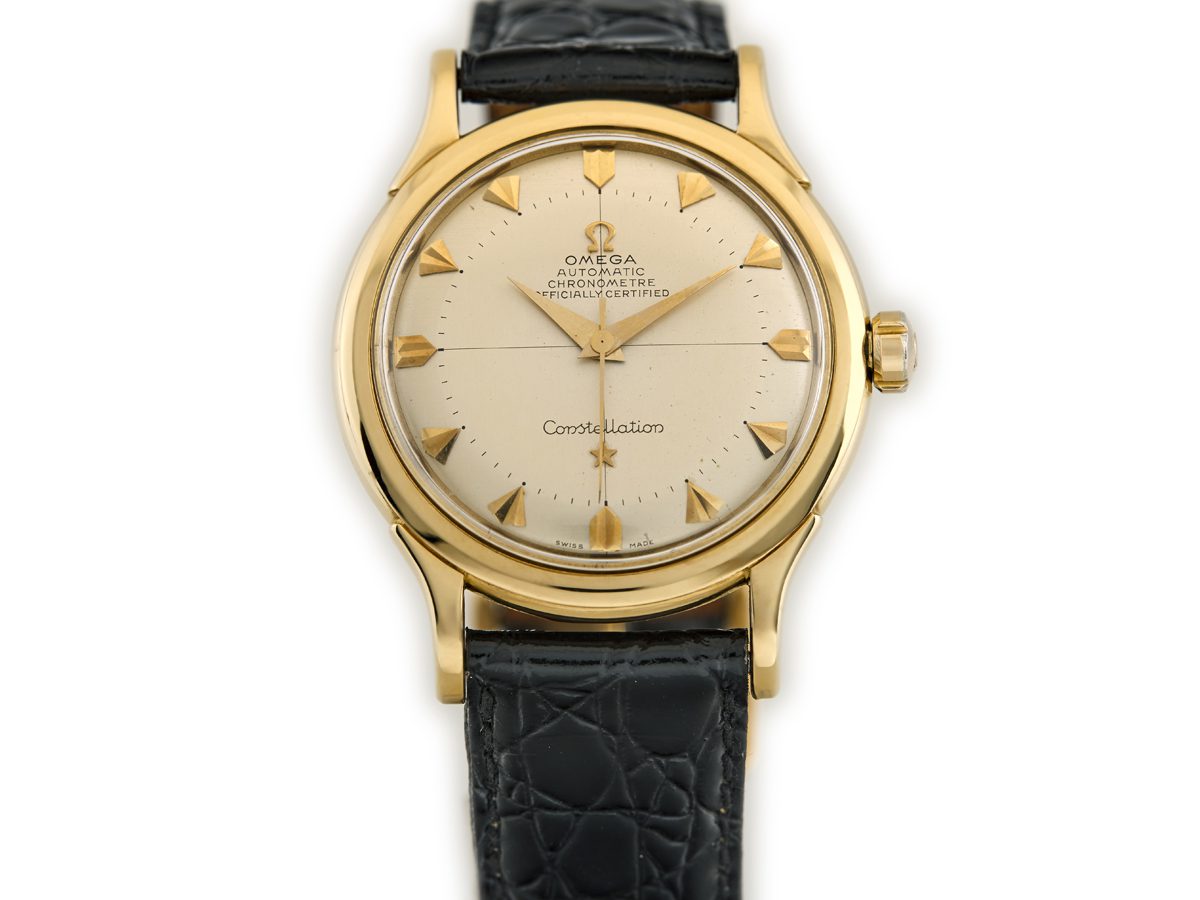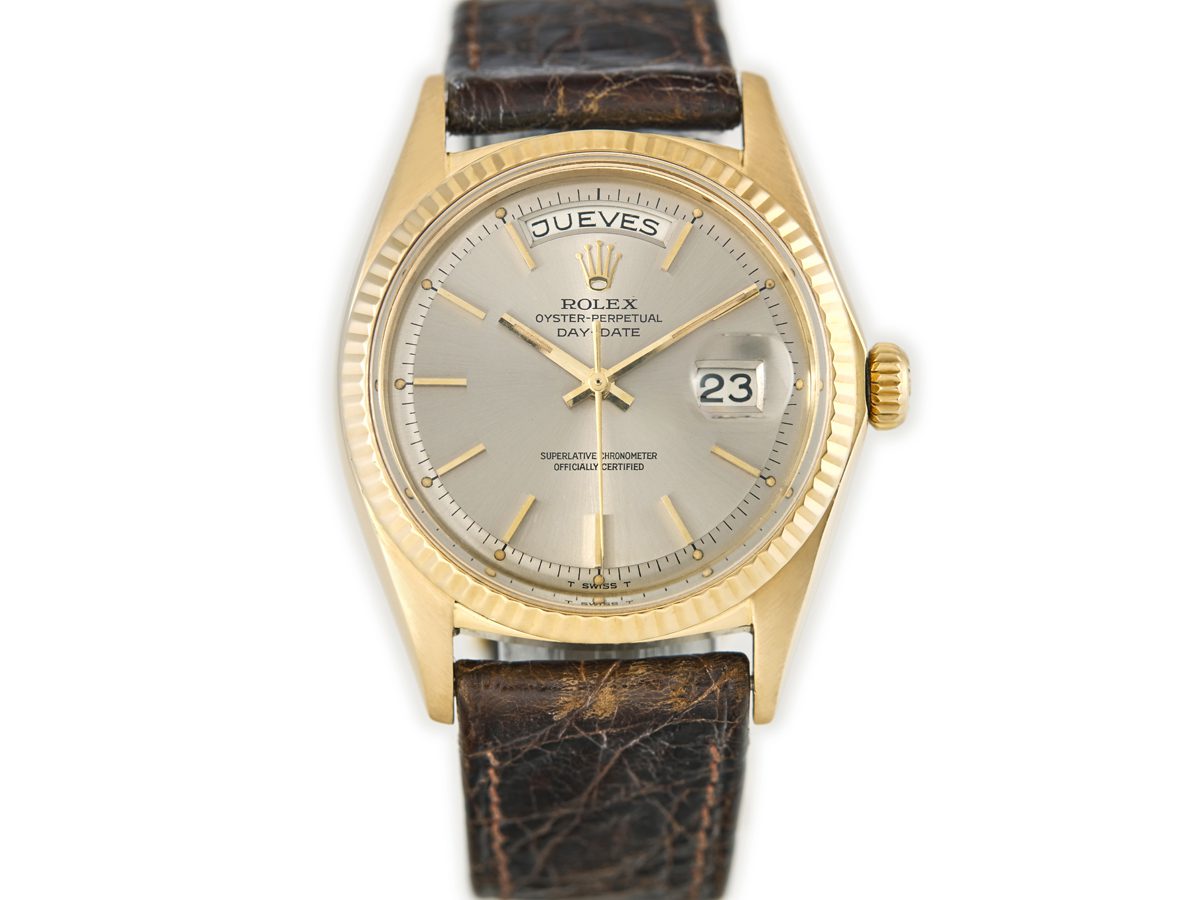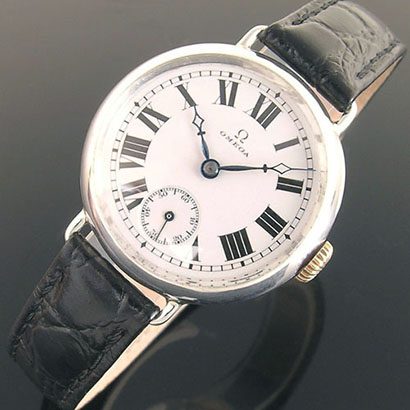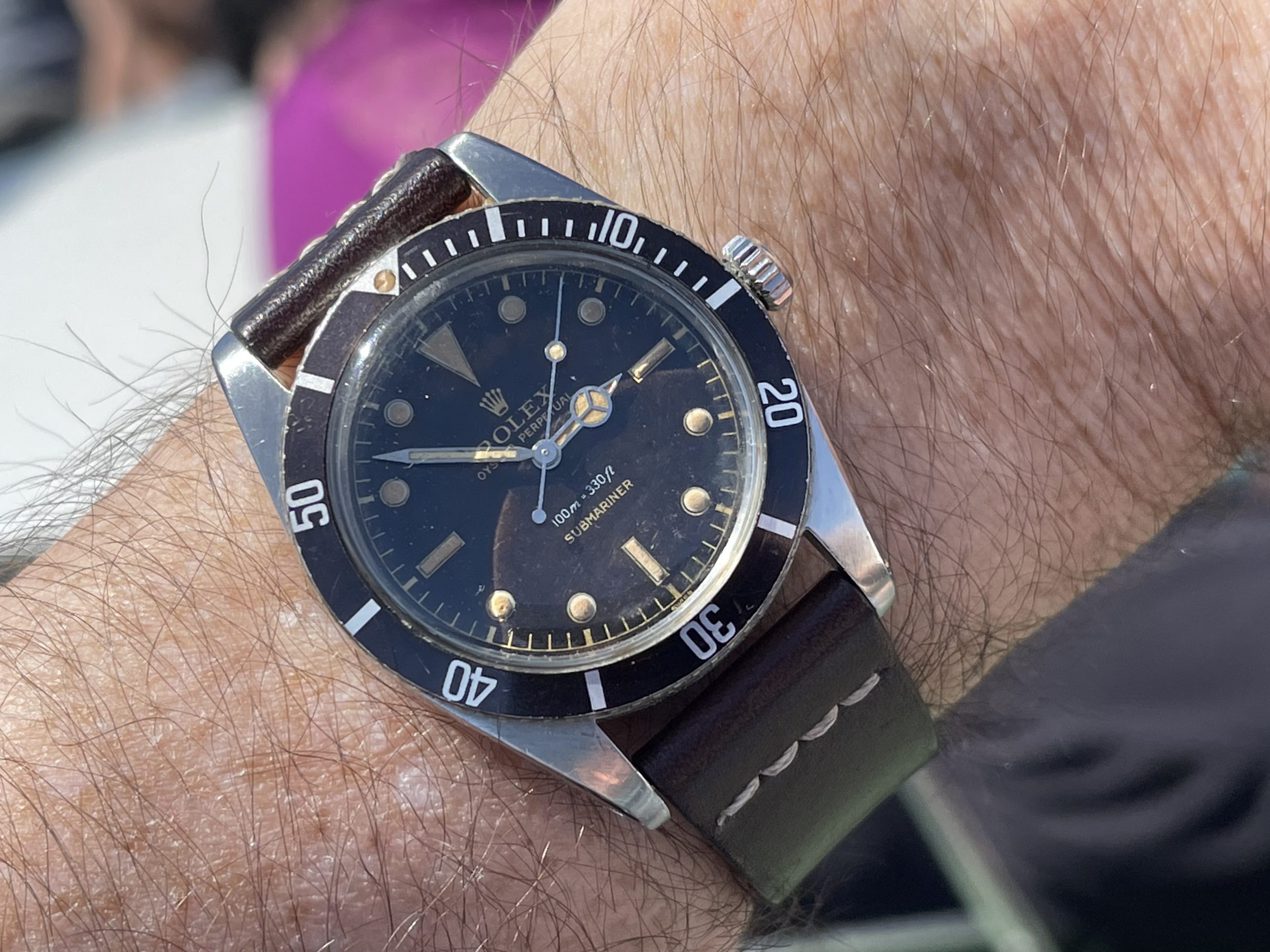WHAT IS THE OMEGA
CONSTELLATION PIE PAN?
What Is a Pie Pan?
The Pie Pan dial takes its name from the shape of the watch dial, having a large flat area in the centre and the edges turned down. This mimics the shape of the pan or tray used in baking pies or flans if the pan were placed bottom-up. Although several watch manufacturers have used this design, the words ‘Pie Pan’ are almost synonymous with the Omega Constellation.

The First Omega Constellation
The Omega Constellation was launched in 1952, but the story began in 1948 when the brand celebrated its centenary. To mark this occasion, Omega produced a limited series of 6000 gold wristwatch chronometers, named – simply enough, ‘The Centenary’. The success of this watch motivated Omega to produce a permanent collection inspired by it, which became the Constellation.
The first Constellation models had distinctive dials which were flat in the centre with twelve facets around the edge, each corner meeting an hour marker. This design has become known as a ‘Pie Pan’.
It is worth noting that there is some debate about the truth of the name’s origin. Long-time collectors refer to these dials as ‘faceted’ or ‘twelve-sided’. The language of Swiss watchmaking is primarily French, in which twelve sides translates as ‘douze pans’.
It is easy to see that a garbled misunderstanding of the original term could lead to an incorrect reference to a baking pan and hence to the current name ‘Pie Pan’. Persistent repetition has caused the name to stick, so whatever the real reason, the early Omega Constellations will be forever known this way.

Why is the Pie Pan Omega Constellation so Sought After?
The Omega Constellation was, for its time, the brand’s flagship product. All the movements were chronometer-rated automatics, and the finishing of the cases and dials was of the highest quality. Omega collectors know they are getting a superb watch, whichever reference they acquire. This watchmaking excellence is married to a highly distinctive dial design.
The play of light across the dial facets catches the wearer’s eye in a way few other watches can match. Compare this to any later Constellation or one of the contemporary models with a dome dial variant, and you will see a lack of equivalent charm and character.

Which Omega Constellations Were Fitted With a Pie Pan Dial?
The twenty years of the Pie Pan Constellation’s production covers five key model references, although each has variants. The earliest two were offered exclusively with a Pie Pan dial, while the later four came with either a Pie Pan or a domed dial.
- 2652 – This was produced in a 35mm case with a high-grade Cal.354, 17 jewel bumper automatic movement.
- 2943 – This was produced in a 34.5mm case with the Cal.504, 17 jewel full-rotor automatic movement. This was the first Constellation to feature a date complication.
- 14381 – This was produced in a 35mm case in a time-only format with Cal. 551. This was the first Constellation to feature a distinctive dog-leg lug design.
- 14393 – This was produced in a 34mm case, powered by Cal. 561, and offered the date.
167.005 – This was produced in a 35mm case in a time-only format with Cal. 551. This movement was part of a record-breaking run of 100,000 Omega movements sent for chronometer testing, all meeting standards twice as high as those required for regular chronometer certification.

What Should I Look for When Buying an Omega Pie Pan Constellation?
A Pie Pan Omega Constellation is a worthy addition to any watch collection, but you must ensure you get the finest possible example for your money. The first thing you must be sure of is that the watch is not a counterfeit, and secondly, that it is in the best condition you can afford.
The simple way to address these issues is to buy from a trusted vintage watch dealer such as Vintage Gold Watches. They offer a ‘Lifetime Authenticity Guarantee’ to ensure the watch is 100% correct. Experienced watchmakers service each watch before sale; cases and dials are carefully cleaned as required.
If you are looking for yourself, you must take the time to study what the genuine article looks like so that you are prepared to identify fakes. Details such as the three-dimensional star applied above the six o’clock position should be both sharply made and correctly aligned. The dial text must be of the correct font and weight, with the letters created precisely. All other dial details offer opportunities for comparison; remember that most fakes are modern, and sixty years of age is hard to copy, even on a good-condition watch.
You must assess the condition once you are sure the watch is genuine. The hero of the Pie Pan Constellation is the dial, so this should be your primary focus. Scratches, staining, or lifting of the lacquer coating will all devalue the watch and are almost impossible to rectify. A repainted dial will never be as good as the original, although it may be the only alternative to save an otherwise good example if done professionally. Inspect the movement and reject any watch with damaged screw heads, rust, or heavy rubbing on the movement plates, as this shows a history of poor maintenance.

Did any Other Watches Feature a Pie Pan Dial?
While the Omega Constellation is the ultimate expression of the Pie Pan dial, it is not the only watch to carry it. Rolex watches had their version with a thinner rim and without the facets. This Rolex Oyster Perpetual Day-Date Model Ref.1803 is a great example, as is this Rolex Oyster Perpetual Datejust Ref.1601. The downward lip at the edge of the dial adds a vintage charm not found in later models. Pie Pan dials can also be found on watches from Jaeger-LeCoultre and IWC from the 1950s and 60s as brands sought to cash in on Omega’s successful formula. Keep a sharp eye out; soon, you will spot vintage Pie Pans everywhere.
Get Your Slice of the Pie
The Pie Pan Omega Constellation is a historically significant watch, representing a high point in watchmaking art and craft. Its distinctive, faceted dial delights the eye whenever you check the time. For the finest examples offered by experts, contact Vintage Gold Watches. If we do not stock the particular model you are after we will be happy to explore the market on your behalf.
Sign up to our regular newsletter to be the first to see our newly acquired stock and to learn more about the world of vintage watch collecting.




